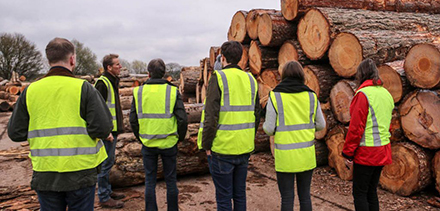Here are five reasons why the cost of timber has increased over the last two years in the UK and why things won’t change in the long run. Whatever unfolds, there’s no getting away from the fact that demand for timber will exceed global supply sometime between now and 2050. And while the supply and demand equation tilts towards demand, we can only expect timber prices to keep going up. Source: Timberbiz
- Supply and demand
Demand in the UK, across Europe, North America, Australia and in China increased during 2021 as Covid lockdown rules were relaxed. In fact, in the UK, an unexpected building boom caught suppliers off guard.
Many suppliers had reduced production and purchasing due to lockdown and the possibility of a recession.
- The knock-on effect of Brexit restrictions
At the start of 2021, Brexit restrictions really kicked in. It became more difficult and more expensive to import wood from the continent, which is where most of our wood comes from.
On top of this, haulage became more expensive and new charges appeared for processing customs paperwork.
- Increased demand in other parts of the world
As if that wasn’t enough, increased demand from other parts of the world made it harder to secure stocks of timber to import. America unexpectedly became a major market for European grown softwood, putting pressure on supplies and encouraging suppliers to increase prices.
- Environmental concerns
Harvesting of oak in Europe is being actively reduced because of concerns about the environment. Mainly that the levels of felling are beyond what is regarded as sustainable.
And on the other side of the Atlantic, environmental campaigners are putting pressure on the Canadian Government to stop the felling of old growth western red cedar, a favourite in the UK.
Climate change is also partially responsible for the diseases and pests that have damaged huge swathes of forest. The Spruce Bark Beetle has wiped out hundreds of thousands of hectares of productive forest in Germany alone.
- The Russian invasion of Ukraine
In 2022 we can add the Russian invasion of Ukraine to the list of disasters.
The human toll and the scale of damage is heartbreaking, and timber supply seems almost irrelevant in the grand scheme of things. But there’s no denying it’s having an impact.
The UK has been importing approximately half a million cubic metres of timber products from Russia annually. Plus, a reasonable quantity from Belarus and Ukraine. It will be hard to replace this from other parts of the world.
The sanctions placed on Russia have also added to the inflationary pressures, particularly where fuel is concerned. Fuel and wages make up a significant proportion of the timber processing costs. And like everything else, Timber prices will follow inflation.
Add all of these factors together and you’ll start to get an idea of why timber prices have climbed – and why we may have some way to go yet.
But what about UK grown timber?
Approximately 70% of the sawn timber that consumed in the UK is imported from overseas. Prices for raw materials in the UK are closely linked to those in Europe and the wider world. If oak log prices rise in Germany, they’ll follow suit in the UK.
But there is some good news: not all home-grown prices have risen as dramatically. British-grown larch and cedar are still cheaper than imported alternatives.
Will the price of timber drop?
With so many factors at play, this isn’t an easy question to answer.
Historical trends tell us that timber prices will probably ease back from the peak, but they’re not likely to tumble back to pre-covid/Brexit levels.
Any softening in timber prices is unlikely to happen until Russia pulls back. But if all the craziness in the world does lead to a major recession, and supply exceeds demand, we may see a bigger reduction in prices for a while.






